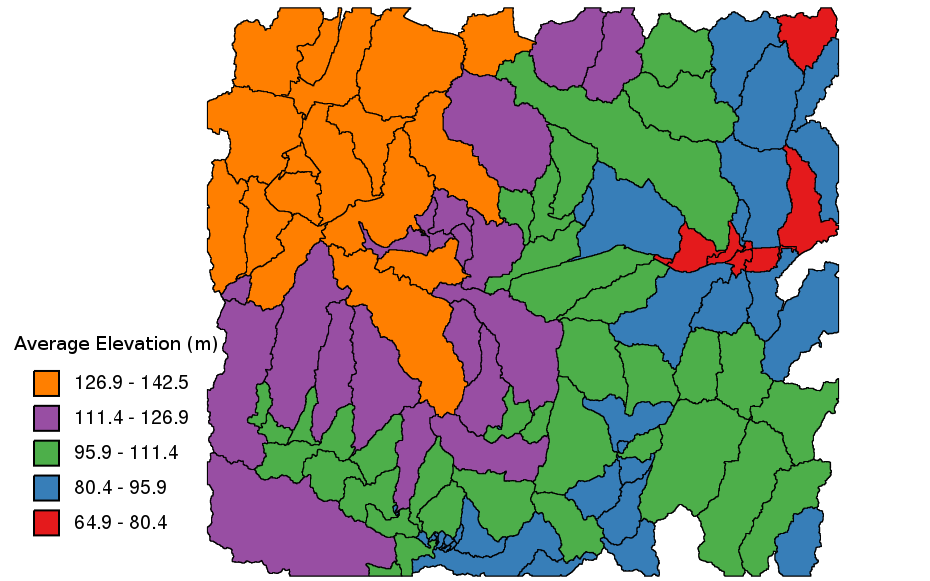
Thematic map of area sizes
Instead of a list of class breaks, the user can also chose a classification algorithm and a number of classes (nbclasses). See the v.class for more information on these different algorithms.
Important note: The module currently supports only area vector type. For displaying thematic choropleth vector maps of other types (points, lines) can be used d.vect.thematic2 available in AddOns via g.extension.
d.vect.thematic -l map=communes3 column=pop \ breaks=111393.250000,222785.500000,334177.750000 \ colors="255:0:0,0:255:0,0:0:255,0,0,0"
d.vect.thematic -l map=communes2 column=pop/area algorithm=std \ nbclasses=5 colors="0:0:255,50:100:255,255:100:50,255:0:0,156:0:0"
# first save legend instructions to a file d.vect.thematic -n map=communes2 column=pop/area algorithm=std \ nbclasses=5 colors="0:0:255,50:100:255,255:100:50,255:0:0,156:0:0" \ legendfile=legend_pop_dens # open a monitor d.mon wx0 # draw the map d.vect.thematic map=communes2 column=pop/area algorithm=std \ nbclasses=5 colors="0:0:255,50:100:255,255:100:50,255:0:0,156:0:0" # draw the legend d.graph input=legend_pop_dens
# create watersheds from elevation map r.watershed elevation=elevation threshold=10000 basin=basins_10k # convert raster to vector r.to.vect input=basins_10k output=basins_10k type=area column=basin_num # upload raster statistics to each polygon in vector map v.rast.stats map=basins_10k raster=elevation column_prefix=elev_ # save legend instructions to a file d.vect.thematic -n map=basins_10k column=elev_average algorithm=int \ nclasses=5 colors=228:26:28,55:126:184,77:175:74,152:78:163,255:127:0 \ legendfile=d_vect_thematic_leg.txt # open a graphical display d.mon wx0 # draw outline of polygons d.vect map=basins_10k type=boundary # draw color fill d.vect.thematic map=basins_10k column=elev_average algorithm=int \ nclasses=5 colors=228:26:28,55:126:184,77:175:74,152:78:163,255:127:0 # set a different font (list fonts with: d.font -l) export GRASS_FONT="sans" # and finally draw legend, but edit the legend file first (for example: # set size to 20, remove feature counts and most decimal digits) d.graph input=d_vect_thematic_leg.txt

Check also Python module from AddOns: d.vect.thematic2
Last changed: $Date$